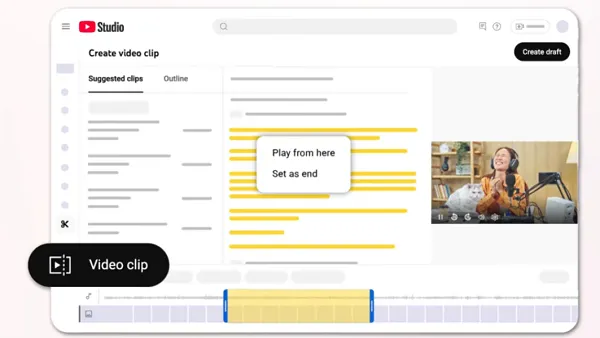Even though (to my knowledge) I am in no way related to Professor Lance Strate at Fordham University in New York, there's something about the Strate name that brings us Strates together.
I have been following Prof. Strate on Twitter for a while, and, as coincidence goes, he is a professor of communication. In his latest post, "You Are What You Tweet," he brought up an interesting subject that, I believe, helps bridge the gap between "old" communication and "new" communication.
People say that communication has "changed soooo much" since the 1940s or whatever, and it has. However, I still think the basic principles remain, and it is our job as communication professionals to help our clients understand that. In this age of new media and social media, we tend to lose sight of the roots and reasons behind what we do.
Prof. Strate describes a discussion he had with another person on Twitter. Here's part of what Prof. Strate wrote:
"This person started posting news items about a political controversy via Twitter, and all of the items had a very strong slant, or shall we say bias, one that went counter to my own leanings. Now, I am all for people being free to express their opinions. And of course, that includes having the right to respond to people expressing their opinions with your own opinions and counterarguments. So I started to respond to this person's tweets.
This individual did respond to me indicating that he was posting this material because American media is one-sided, and he wanted to see what the other side had to say. This sounded strange to me, since there's a difference between looking at items and posting the links on Twitter. Just to reinforce that point, here are some of the specific replies I sent as this exchange continued. While I'm only giving you my side of the story, my intent is not to win an argument, just to make a point about the medium:
if you're posting one side of a controversy, you're doing more than peeking at the other side, you are advocating for them."
I've never heard it put that way before, but I think the Strate is right.
While Twitter is known as a microblogging site, it does not serve the same purpose as a blog.
"...In this medium there is nothing else apart from what you put out there. There is your profile, and there's whatever URL you include, and there's your little icon. Apart from those items, you yourself are constituted, in this medium, by and through the messages you send-they create your persona, your self. In face-to-face interaction, nonverbal cues are very powerful and meaningful, and I can remain silent and communicate a great deal, especially on the relationship level. On Twitter, there is almost no nonverbal communication, it's all in what you say."
Do you get what he's saying? Because you're limited to 140 characters on Twitter, you're not supposed to ramble on about the fact that you posted something but you don't really agree with it...yadda, yadda, yadda. As Prof. Strate says, when you Tweet, your Tweets inherently have YOUR stamp of approval, your advocacy behind them. If you want to argue with someone, go to a discussion forum or something (That's K. Strate's opinion.).
As Prof. Strate was closing, these were some of his final Tweets:
"When you tweet, you are not just transmitting information, you are establishing an identity, constructing a persona or self
When you tweet, you are projecting a definition of who you are, and your relationship to your "followers" and readers
Your followers and readers in turn take part in defining who you are, based on what you tweet
In other words, you are what you tweet!"
I know a lot of us have talked about building "our own brand" by our presence on social media applications. To me, Twitter is a huge part of that brand-building process, but you need to be careful about what you say. If someone is looking at your public profile and can only see your updates and NO replies from anyone else, what is he or she going to think about your brand if you're trying to be a rebel rouser and play The Devil's Advocate?
Prof. Strate talks in the next paragraph about the basics of communication and why we do what we do.
"Having said that, I do think that this all relates to the seminal work of Paul Watzlawick, as presented in the book he co-authored with Janet Beavin Bavelas and Donald D. Jackson, entitled The Pragmatics of Communication. This was one of the key works for the discipline of communication back when I was a student...That's where Watzlawick and his colleagues presented their first axiom of communication, One cannot not communicate.
The point of that is simply that everything you say or do, or don't say or do, has message value, says something one way or another, especially about yourself and your feelings. They also note that communication always functions on two different levels, one being the content level we are always aware of. The other is the relationship level, where we communicate about how to relate to one another and how to interpret the content we are sending-in fact, it is difficult to know what to make of the content unless we first have established a relationship. The relationship level is always present, but we may not be aware of it most of the time. But it is much more powerful than the content level-relationship overwhelms content...Bring Erving Goffman into the mix, based on his well known book, The Presentation of Self in Everyday Life, and it also follows that along with establishing and maintaining relationships, we are projecting our own definitions of the situation to others, and hoping that they accept those definitions. And we are putting on a performance, playing a role, and in doing so, creating a persona or sense of self."
This is where I think he bridges the gap between old and new communication. Think about the persona you're creating when you're on Twitter. "One cannot not communicate." Like he said before, there aren't any nonverbals on Twitter, so it's all about what you say. It's about what you're communicating.
I guess it's just something to think about, but I'd love to hear what you have to say.









